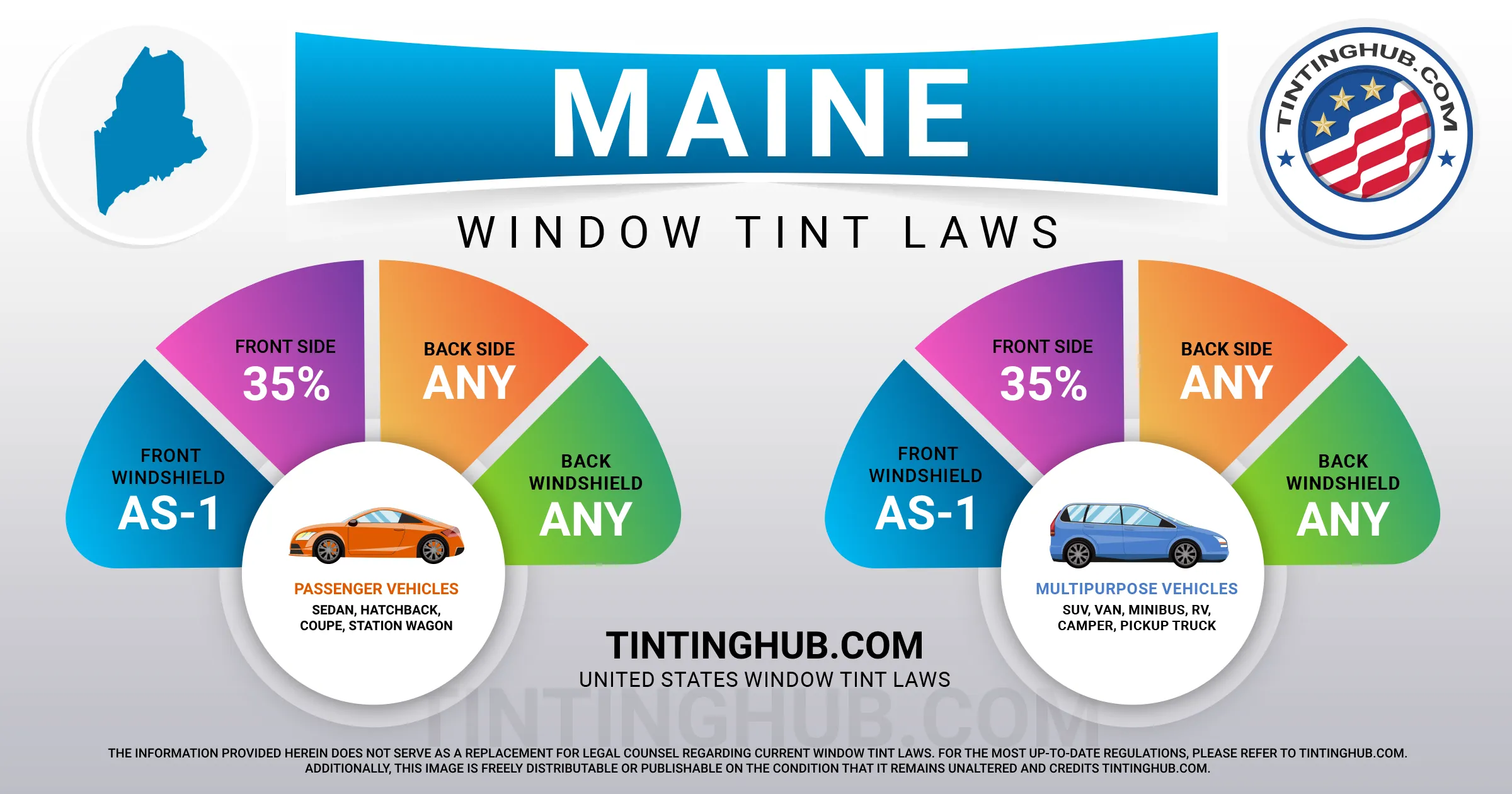Maine Window Tint Laws (Last Update 2024)

When it comes to car window tinting, understanding the regulations specific to your state is crucial. Maine, in its pursuit of safety and visibility, established its car window tinting laws in 1989. In this comprehensive guide, we’ll provide you with all the essential information you need to know about Maine’s window tinting rules. We cover everything from permissible tint darkness to tint reflection and additional regulations.

Window Tint Darkness in Maine
VLT, or Visible Light Transmission, measures the degree of visible light allowed through your car windows. Maine’s regulations are precise and distinct for sedans and SUVs or vans.
Tint Darkness for Sedans
- Windshield: Non-reflective tint is permitted above the AS-1 line or within the top 5 inches of the windshield.
- Front Side Windows: A minimum of 35% light transmission is required.
- Back Side Windows: Must allow more than 35% of light in; no restrictions apply if the vehicle has outside rearview mirrors on both sides.
- Rear Window: Again, more than 35% light transmission is required; no restrictions apply with outside rearview mirrors.
Tint Darkness for SUVs and Vans
- Windshield: Similar to sedans, non-reflective tint is allowed above the AS-1 line or within the top 5 inches of the windshield.
- Front Side Windows: A minimum of 35% light transmission is necessary.
- Back Side Windows: Any level of darkness can be used.
- Rear Window: SUVs and vans have the flexibility to use any level of darkness on their rear windows.
Window Tint Reflection in Maine
Window tint can effectively reduce glare and heat by reflecting incoming light. Maine law acknowledges this benefit but imposes certain restrictions on the extent of reflection.
Tint Reflection for Sedans
- Front Side Windows: Reflective materials are not permitted.
- Back Side Windows: Similar to the front side, no reflective materials are allowed.
Tint Reflection for SUVs and Vans
- Front Side Windows: Reflective materials are also prohibited for SUVs and vans.
- Back Side Windows: These windows are subject to the same restrictions – no reflective materials allowed.
Additional Maine Window Tint Rules and Regulations
Apart from tint darkness and reflection, Maine has other important laws and regulations that you should be aware of:
- Side Mirrors: If your back window is tinted, you must have dual side mirrors.
- Restricted Colors: While Maine law doesn’t specify particular tint colors that are prohibited, it’s wise to choose tints that comply with federal guidelines.
- Certificates: Film manufacturers must certify the film they sell in the state, so ensure that your chosen film meets these requirements.
- Stickers: Maine doesn’t mandate a sticker to identify legal tinting, but it’s always a good practice to keep the necessary documentation.
- Medical Exceptions: Maine law allows medical exemptions. In certain cases, the Chief of the State Police can grant a certificate of exemption due to specific medical conditions.
- Penalties: Violating these tinting laws can result in a traffic infraction with a minimum $100 fine.
It’s essential to note that interpretations of Maine’s tinting laws and regulations may vary by county or place of residence. Therefore, it’s advisable to double-check this information with your local DMV or law enforcement authorities.
We last updated our information on window tint laws in Maine in 2023.
Maine’s car window tinting laws, established in 1989, serve to promote safety and visibility on the roads. If you come across any outdated or incorrect information, please don’t hesitate to contact us. We commit to providing accurate and up-to-date information on window tint laws and regulations.
As a trusted industry leader, we take pride in offering precise and reliable window tint law information to keep you well-informed.